Organic farming allows you to grow cultivated plants without the use of chemical fertilizers, which can adversely affect human health. One of the most common plants for fertilizer is white mustard like green manure. It allows you to improve the quality of the soil and get nutritious vermicompost, which will be suitable for all crops.
Material Content:
The use of white mustard as a fertilizer for the soil
The aboveground and underground parts of the plant in the process of decay can form up to 400 kg of useful organic compounds per 1 ha. As a result, due to the high enrichment of the soil with organic matter, it is possible to achieve maximum productivity without using additional fertilizers.
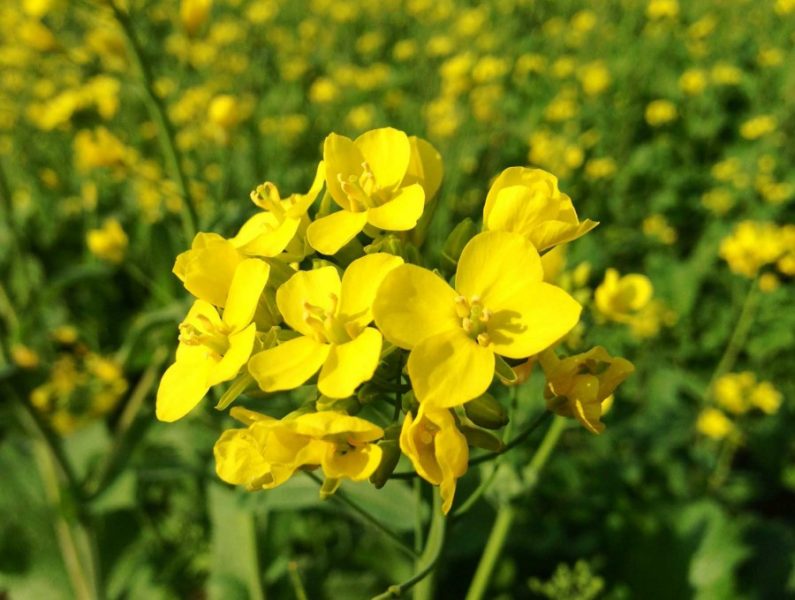
The main benefits of white mustard are as follows:
- prevention of leaching of nitrogen from the soil;
- enrichment of the soil with phosphorus, potassium and nitrogen during the decomposition of green mass and underground mustard;
- rapid plant growth prevents the development of weeds, suppressing them in competition for sunlight;
- the essential oils in the plant prevent the development of many pathogenic bacteria and fungi, and also reduce the number of pests in the area, both underground and aboveground;
- core root, penetrating to a depth of 3 meters, increases soil ventilation and makes it looser.
If you do not mow the plants for the winter, then stems with a height of up to 70 cm form a dense cover on the soil that will protect the soil from weathering. Due to this, moisture that is needed by plants in the spring will remain in the soil.
Use of white mustard as a siderate
The use of white mustard as a siderate is associated with a number of plant properties that make this green fertilizer the most convenient for growing. After incorporation when digging mustard greens into the soil, the soil is enriched with organic matter and mineral compounds, as well as which the plant actively gives up during decay. As a result, other crops growing after mustard receive high-quality nutrition and a powerful impetus for active growth.
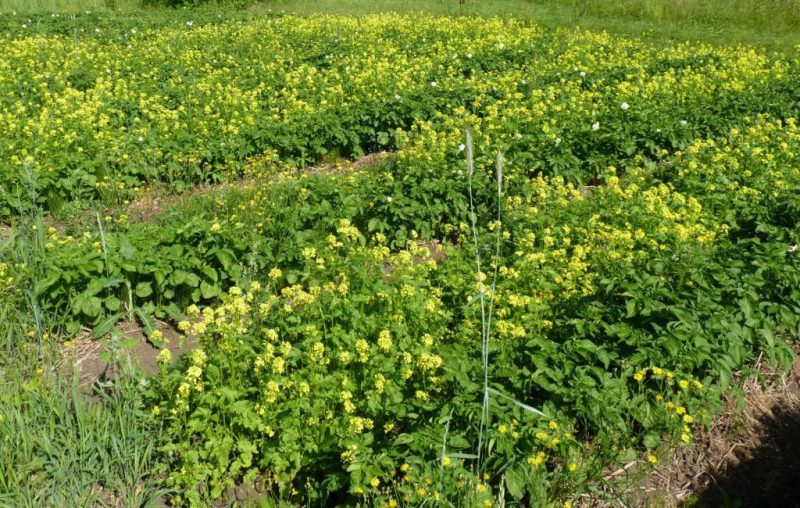
- White mustard is highly cold resistant and can withstand temperatures of -5 degrees.
- Culture has distinctive properties that slightly complicate agricultural technology.
Mustard belongs to cruciferous and is affected by many diseases. Because of this, it is important to remember that right after it you can’t sow plants of this family.
It is also worth considering that the seeds are readily eaten by birds, as they are not embedded in the soil to a considerable depth. In order to prevent this, it is necessary to deepen the seeds or to qualitatively mulch the soil before winter if planting is carried out in autumn. In the spring, for its seeds, its seeds are not of great interest, since there is a sufficient amount of other feed.
Mustard siderates clear the soil of the bear and wireworm.
Growing Features
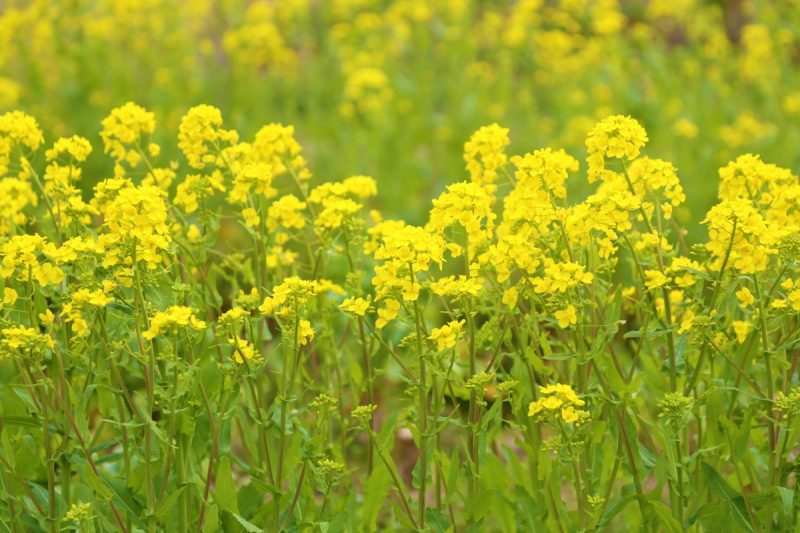
In order for siderat to be of high quality, it is important to properly grow it. Like all plants, white mustard during cultivation requires compliance with a number of agricultural practices. You can’t just pour seeds on the ground and wait for the results.
Preparation of soil for planting mustard
Sod-podzolic soils are most suitable for the plant. However, it can also be easily grown on sandy soil if peat is added to it. If the clay and acid soils, or the garden is located on salt marshes, then you need to choose a different plant as siderat. Culture needs enough light and moisture.
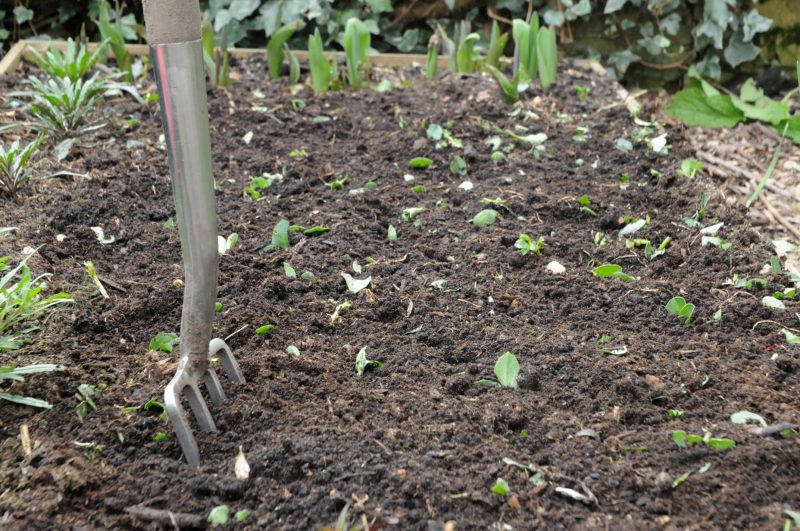
Preparing the soil for growing mustard is not difficult. Just dig a plot and select weed roots from the ground. After this, the soil must be watered. This ends the preparation, and you can begin to plant the crop. For its cultivation, special care is not required. The main thing is watering.
How and when to sow white mustard like green manure?
Mustard can be sown in spring or autumn. Each method has its pros and cons. You can sow culture since March. Maximum results will be obtained if you plant mustard 30 days before planting a food crop. Keep in mind that turnip does not tolerate mustard, even as a neighbor.
In order for the mustard not to suppress the growth of cultivated plants, it is necessary to wait at least 10 days after the green mass is mowed and dug in the ground, and only after that plant.
Mustard is sown manually, having gathered seeds into a handful, they are scattered over the soil dug up and leveled by a rake. Per 1 m2 of soil, normally should be 5 g of seeds. If the seeds lay too rarely, you can additionally add another portion. If too many seeds are poured, there is no need to move them, since they will still give high-quality greens and plentiful roots. Crowding with a short period of growth will not interfere with the development of culture.
The seeds should be sprinkled with a layer of soil no more than 1 cm thick. If some of them remain on the surface, there is nothing to worry about, since plants will also grow from them, as well as from seeds embedded in the soil, unless, of course, cruciferous fleas eat them .
After the seeds are filled, the area is carefully watered with water from a watering can.
It is strictly forbidden to use a hose to moisten the soil. A strong flow of water will lead to the fact that the seeds will be excessively deepened, or washed out of the ground, which will not make it possible to obtain high-quality seedlings.
Pros and cons of autumn and spring sowing
The spring and autumn method of growing white mustard has its pros and cons.During spring planting, it is possible to enrich the soil immediately before planting cultivated plants, as well as to destroy pathogens of many diseases and parasites in it. True, cruciferous crops on the site of mustard can be grown only for the next year. A useful property of mustard planted in spring is its ability to suppress weed growth for up to 3 months. The disadvantage of sowing this green manure at the beginning of the season is the inability to grow it near the planting sites of turnips and cruciferous.

If you select a scheme for the autumn planting of mustard, then it also has certain advantages and disadvantages.
The positive aspects of this option for growing green manure are:
- rapid development of plants, which allows you to get the necessary above-ground green part in the shortest possible time;
- sheltering the soil with plant stems to prevent freezing and dehydration;
- disinfection of the site from many diseases and pests due to the high concentration of essential oils. In winter, re-contamination of the soil does not occur, so in spring the areas remain clean;
- no risk of seeds. If the plants planted in the spring will not be mowed in a timely manner and give seeds, the mustard will be able to spread and turn into a persistent weed;
- full development of the root system - in spring, mustard does not have time to form a sufficiently deep root, which will ensure high-quality loosening of the soil even at great depths;
- prevention of soil erosion.
The disadvantages of this method of growing white mustard as a fertilizer are not numerous.
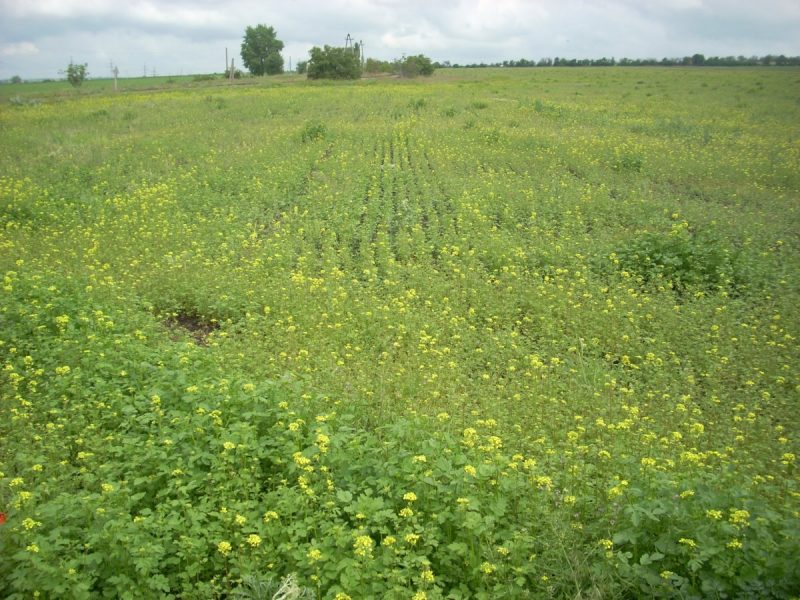
In the autumn planting of plants, the following disadvantages are distinguished:
- the impossibility of planting cruciferous plants in spring at a place of mustard growth;
- the risk of eating seeds by birds, for which they are excellent food in the fall;
- the risk of freezing of plants with the breakdown of the necessary organic compounds in them during especially cold and low snowy winters.
The gardener must decide whether to plant a plant in spring or autumn, depending on what planting is planned to be carried out throughout the season.
When to mow a plant?

Mustard must be mowed before flowering in order to prevent the formation of seeds and planting in the garden with its transition into the form of a weed. To obtain high-quality fertilizer, you should leave the culture from the time of emergence for 45 days. After this, mowing and digging the green mass into the soil are carried out. When mowing mustard, it is determined by weather conditions. If due to the cooling, the culture has not developed enough, you can leave it to grow a little more. In the autumn planting of the crop, you can not mow it, since there is no risk of seeds, and in frost the plant itself will lie on the ground. In the spring, it’s quite easy to dig.
Using white mustard as a siderate is an excellent solution for gardeners who do not want to use chemicals in their area.












